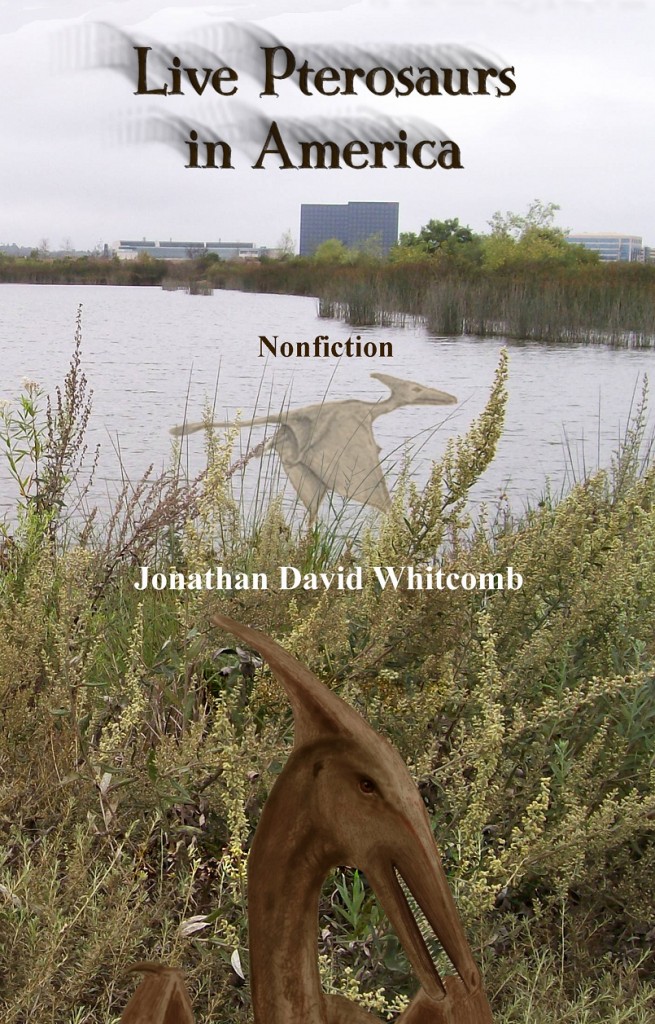Twelve months ago I self-published the third edition of my cryptozoology nonfiction Live Pterosaurs in America. The first edition of the paperback book was given an Amazon review yesterday. The reader, apparently, had no idea that newer editions are available, even though Amazon states clearly, “This is the first edition, before the expansions of newer editions.”
I believe that reader would have paid fifty-three cents more to get the latest edition, if he knew. One of his stated reasons for his poor reception of the first edition was its brevity (104 pages); the third edition is 154 pages.
I will not search out one of my old first editions to show faults with the reasoning of “Ashtar Command.” Let’s be up to date. Some of his comments are nothing new, old objections to the concept of modern living pterosaurs and old objections to the religious beliefs of Bible believers. Let’s consider these in light of the third edition of Live Pterosaurs in America, and hope that he would not have written the following if he had read that third edition: “I’m still *very* sceptical to Jonathan David Whitcomb’s book.”
Anonymity
Skeptic: “The eye-witnesses prefer to be anonymous or pseudonymous due to fear of ridicule.”
Response: All editions of the book, as I recall, have Susan Wooten’s eyewitness report in the first chapter. “Susan Wooten” is her real name. Most eyewitness are anonymous, it’s true, but why focus on that? I suspect that the skeptic himself would also be anonymous if he had been an eyewitness to a living pterosaur. But the latest edition has critical new sighting reports, including two from Cuba, both of which have real names: Eskin Kuhn and Patty Carson.
Secrecy
Skeptic: He mentions the secrecy of some of the cryptozoologists, keeping secret any details about locations. He says, “This means that scientists can’t do much with their material, and other cryptozoologists or investigators of the paranormal might also feel left in the lurch.”
Response: What do fossil hunters do when they begin to make an apparently important discovery? Is it strange that they would keep the location secret? Many of the expeditions of my associates have been extensively published, with many details coming out within days of the completion of an expedition. Regarding one of my recent investigations in the Western United States, I have sometimes kept some details secret, as the investigation is ongoing; but if any other cryptozoologist is serious about finding out what I am doing, that person could easily contact me and learn many details. Don’t confuse serious investigations by cryptozoologists with casual glances from the general public.
If this reader had himself been seriously investigating the phenomena of pterosaur sightings he might have learned about one of those secret locations. At least he might have learned that on private property where cryptozoologists had been searching (with permission) the night sky for the creatures, somebody, without the knowledge of the land owner, had learned something and gone over there without permission and shot off a gun, apparently at those flying creatures. None of the researchers were injured, but it proves the point: Secrecy can protect both what is being sought and the seekers (not to mention the peace of mind of the land owner and his continuing support of the investigation).
Hoax Possibilities
Skeptic: “Whitcomb claims to be able to tell a hoax from the real thing, but he never explains how.”
Response: Really! I thought I made it clear, even in the first edition, why I do not publicly give out many details about how I determine eyewitness honesty-credibility. Making public such details would make it much easier for a hoaxer to fool me with a hoax. I believe that explanation is in all editions of the book.
Misidentification Possibilities
Skeptic: “Many of the ‘pterosaur’ observations are probably misidentifications of large herons, bats, kites or pterosaur models.”
Response: This is an old blunder. The skeptic mentions no particular sighting but does mention misidentification possibilities. Science thrives on details. Why avoid details? How easy it is for an open-minded person to think about a particular sighting! Take the South Carolina encounter between Susan Wooten and the long-tailed creature that flew right in front of her car; how easy it is to just choose that sighting and think about it. But that might require an open mind.
If this skeptic had read the third edition, he would have encountered the two daylight sighting reports regarding Guantanamo Bay, Cuba, (1965 and 1971) neither of which can be explained away as a large heron, bat, kite or pterosaur model.
Bible Perspective
The skeptic mentioned, more than once, the investigators religious perspectives. He said, “I think it’s more likely that the U.S. hinterland is haunted by Frigatebirds with mange and a penchant for Venus, than Noah saving a baby pterosaur on the Ark.”
Live Pterosaurs in America (in all three of its editions) is not a religious book, although it mentions the Biblical perspective of many of the explorers and investigators. It is a cryptozoology book. And it requires something of an open mind to human experiences of eyewitnesses, a mind open to the possibility that ones previous indoctrination may have been ill founded.
Cover of the third edition of this non-fiction cryptozoology book (paperback)
.
From . . . reports in the book Live Pterosaurs in America, we learn of the possibility that some of those flying creatures may eat birds.



